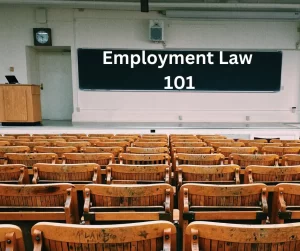
Under Washington State laws, what is the meaning of “statute of limitations” within the context of civil litigation? Here’s my point of view.
(IMPORTANT: This article is for informational purposes only and is based upon my point of view. Due to the rapidly changing nature of the law, we make no warranty or guarantee concerning the accuracy or reliability of the content in this article. No content on this site, regardless of date, should ever be used as a substitute for direct legal advice from your attorney. Please review our Disclaimer | Terms of Use | Privacy Policy before proceeding.)
Introduction: Statute of Limitations
Within the context of Washington State civil litigation, the concept of the statute of limitations serves as an essential thread that weaves together justice, fairness, and practicality. Rooted in the belief that legal actions should be pursued within a reasonable timeframe, the statute of limitations imposes a temporal boundary on the initiation of lawsuits. This legal doctrine aims to strike a delicate balance between the need for timely resolution and the preservation of fundamental fairness. In this article, I will define the term, address its key principles, and discuss exceptions and tolling.
Defining Statute of Limitations
The statute of limitations is a legal principle that dictates the maximum time allowed for a plaintiff to bring a lawsuit or legal action against a defendant. Its primary purpose is to ensure that legal disputes are resolved promptly, avoiding the complications that arise from the passage of time, such as fading memories, lost evidence, and changes in circumstances.
Statutes of limitations can vary depending on the legal theory; to learn about the statute of limitations for employment discrimination claims under the Washington Law Against Discrimination (WLAD), we invite you to read our article entitled: WLAD Statute of Limitations.
Key Principles
1. Preserving Evidence and Witness Testimony:
The statute of limitations acts as a safeguard against the deterioration of evidence and witness testimony over time. It recognizes the inherent challenges of litigating a case where memories may fade, documents may be lost, and witnesses may become unavailable.
2. Promoting Judicial Efficiency:
Efficiency is a cornerstone of the American legal system, and the statute of limitations plays a vital role in achieving this goal. By encouraging prompt legal action, it helps prevent the clogging of court dockets with stale claims, allowing the legal system to focus on resolving current and pressing issues.
3. Balancing Fairness and Finality:
The statute of limitations embodies the principle of fairness by providing a degree of legal certainty for potential defendants. Once the prescribed time limit has passed, individuals and entities can reasonably expect to be free from the threat of litigation related to a particular incident, promoting finality in legal matters.
Exceptions and Tolling
While the statute of limitations is generally rigid, exceptions and tolling provisions exist. These may include circumstances such as the discovery of fraud or the minority of the plaintiff at the time of the incident, which can extend the time frame within which legal action can be initiated. To learn more about tolling the statute of limitations for employment discrimination claims under the WLAD, we invite you to read our article entitled: WLAD Statute of Limitations: Equitable Tolling.
Conclusion
The statute of limitations serves as a guardian of justice, ensuring that legal disputes are resolved in a timely manner while balancing the interests of both plaintiffs and defendants. Understanding the nuances of these temporal boundaries is vital for anyone handling lawsuits or legal actions, highlighting the intricate interplay between fairness, efficiency, and the pursuit of justice within the bounds of time.
Read Our Related Articles
We invite you to read more of our articles related to this topic:
» Employment Law 101: Alternative Dispute Resolution
» Employment Law 101: Definition of Pleading
» Employment Law 101: Depositions
» Employment Law 101: Discovery (WA State)
» Employment Law 101: Legal Theory
» Employment Law 101: Mediation
» Employment Law 101: Remedies
» Employment Law 101: Summary Judgment (WA State)
» Employment Law 101: The Complaint
» Employment Law 101: The Defendant
» Employment Law 101: The Plaintiff
» Employment Law 101: The Summons
LEARN MORE
If you would like to learn more, then consider contacting an experienced attorney to discuss your case. This article is not offered as legal advice and will not establish an attorney-client relationship with Law Office of Gregory A. Williams or the author of this article; please refer to our Disclaimer | Terms of Use | Privacy Policy for more information.
–gw

